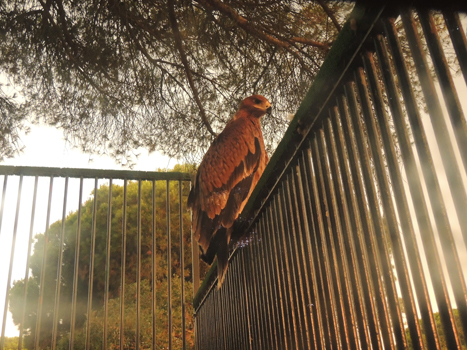The distribution of juvenile dispersal distances of a territorial long-lived species with deferred maturity, the Spanish imperial eagle, was investigated. A reintroduction program was used as an experimental approach to test predictions of different hypotheses about the distribution of juvenile dispersal distances: competition and wandering behavior. The maximal juvenile dispersal distances of 59 young eagles were determined; (i) 30 wild non-manipulated individuals, and (ii) 29 translocated young under an ad libitum feeding program, released with adults breeding in the area. The competitive displacement hypothesis predicts a leptokurtic distribution of distances in wild non-manipulated young as well as in released young. Under the ‘wandering' hypothesis, however, a leptokurtic distribution is expected in wild young but a normal distribution would be expected in young released, owing to a general improvement in the nutritional status of released young that have been fed ad libitum, as is usual in reintroduction programs. Additionally, a negative relationship between hatching date and dispersal distances is expected in wild young but no relationship in released young under ad libitum feeding. Mean maximum dispersal distances for all the juvenile eagles was 142.8 Km. No differences between sexes were found, nor between populations or between wild and reintroduced young. Wild young distances were not normally distributed, being closer to a Poisson distribution. In contrast, released young with adults (under ad libitum feeding) showed a normal distribution. Wild birds showed a significant negative relationship between dispersal distance and hatching date, with young that hatched late in the season dispersing shorter distances. However, released young under ad libitum feeding showed no significant relationship between hatching date and dispersal distance. These results support the "wandering" hypothesis as the main driver of the distribution of dispersal distances. informacion[at]ebd.csic.es: Ferrer & Morandini (2017) Better nutritional condition changes the distribution of juvenile dispersal distances: an experiment with Spanish imperial eagles. J Avian Biol doi:10.1111/jav.01468
http://onlinelibrary.wiley.com/doi/10.1111/jav.01468/abstract

 Open Call for Research Projects in ICTS-Doñana!
Open Call for Research Projects in ICTS-Doñana!



